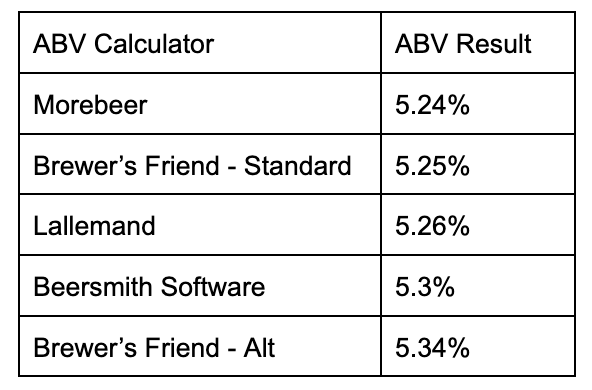Why measuring ABV accurately is important
February 2024
How do you determine the alcohol by volume (ABV) of your beverage? When I was on the brew deck of a small craft brewery, we usually calculated the ABV by measuring the original gravity and the final gravity. This calculation is an estimate that may be “good enough” for some beers, but what about when you are making inventive beers? What about when you are adding other flavors? How about when you age in a spirits barrel? Make that low-alcohol or NA option? There comes a point when you need to measure more than gravities. There comes a point when you need to measure the actual ABV of your beverages. Selling your customers on a beer that is much higher or lower ABV than on the package is a problem.
The Alcohol and Tobacco Tax and Trade Bureau (TTB) has detailed requirements and tolerances for the reported ABV. For malt beverages, beer, the tolerance depends a bit on the reported alcohol by volume. If your beer is reported above 0.5% ABV, there is a tolerance of 0.3% but it cannot be less than that 0.5% ABV. When your beer is labeled to be “non-alcoholic” and therefore less than 0.5% alcohol by volume, the variance is that it just cannot have more than 0.5%. (https://www.ttb.gov/beer/labeling/malt-beverage-alcohol-content)
Calculating ABV by original gravity and final gravity is common in a small producer. Unfortunately, there are multiple published formulas. They are all similar, but don’t always agree. For example, for a beer with an original gravity of 1.050 SG (12.38 °P) and a final gravity of 1.010 SG (2.56 °P), you can use five different online ABV calculators and get five different results:
Being inventive with additives will affect the amount of alcohol in your beer. Adding fruit can turn your reliable calculation into the unknown. Many big puree producers will measure the density (Brix) of their purees and provide a range. This range is usually quite large. How much of this is fermentable sugar? How much is water? Even knowing the density of the fruit, how the fruit will react with your process takes some practice. Fruit puree can sometimes add enough fermentable sugars to increase the alcohol. Sometimes there is so little fermentable sugars that the alcohol by volume decreases. This does not even begin to think about adding whole fruit. Knowing what is going to happen or what has happened can help. To truly know, you need to measure the ABV.
What happens when you age your beautiful beer in that coveted spirits barrel? Breweries are not allowed to add spirits directly to a beer, but that spirits barrel invokes so much of that customers love. That love comes with some alcohol. Along with the dregs that may have still been in the wood, as time passes, the angels take their share. The ABV of the beer can change by a good amount. Again, to know the actual ABV, you need to measure.
Customers are being more conscious of what they are drinking. The NA and low-carb markets are still growing. Determining the alcohol by volume using gravities may be “good enough”. Are we ok to be “good enough” to our customers? To be honest to customers, you need to measure.
-Feb 2024

